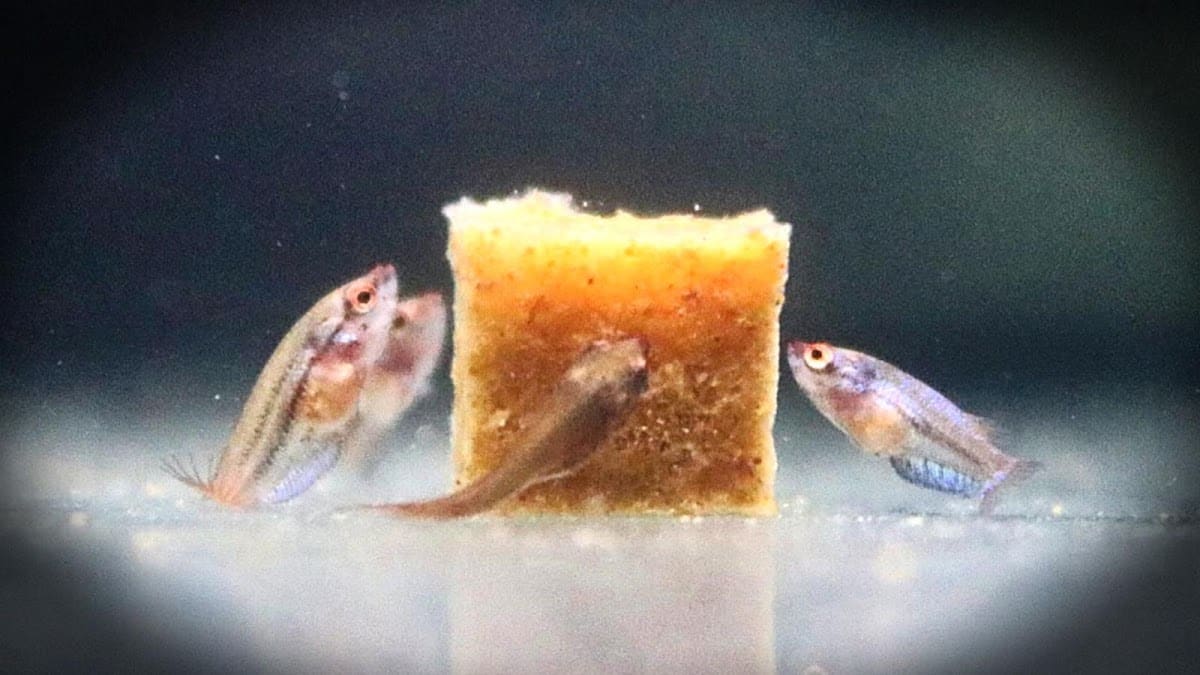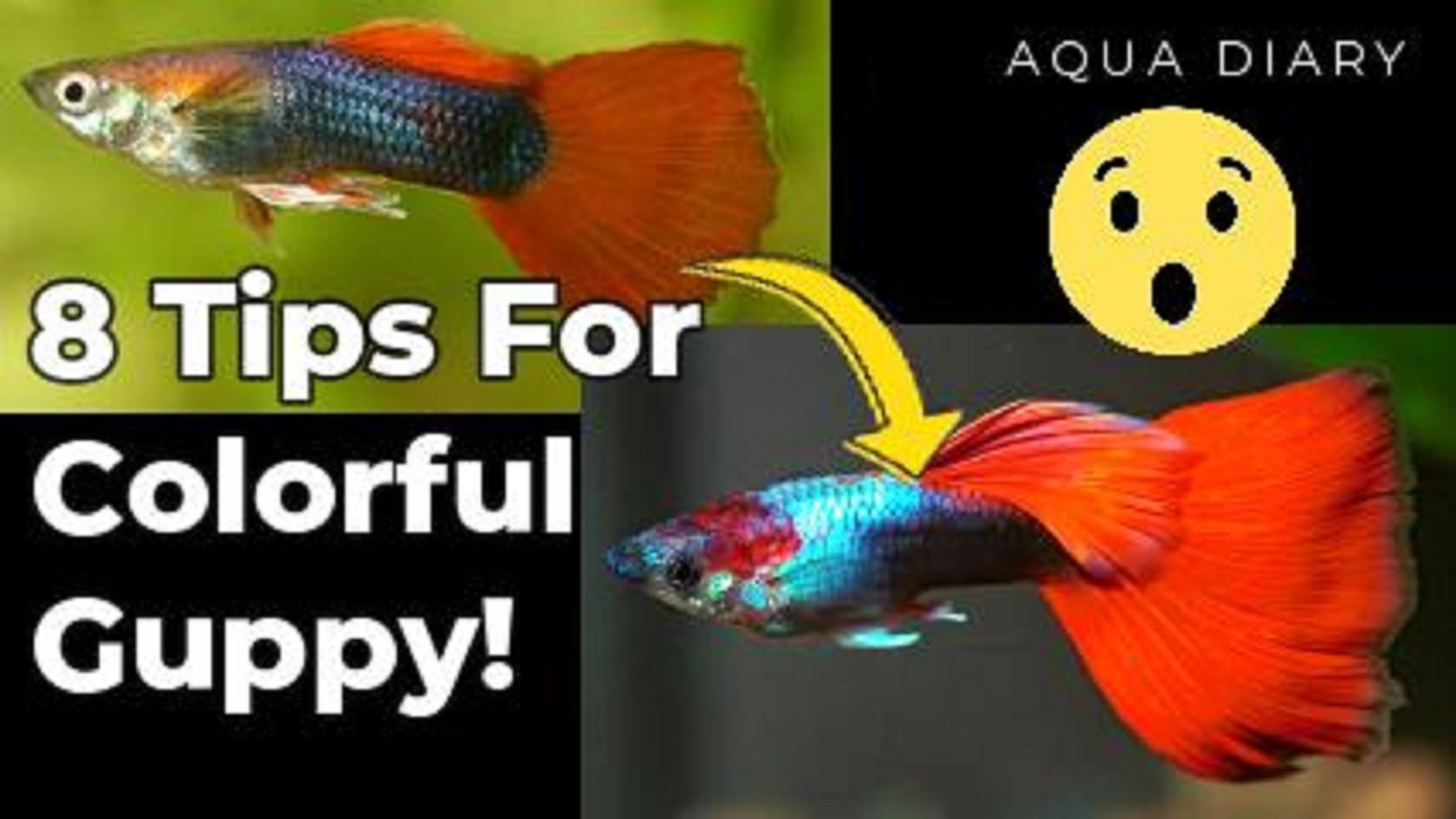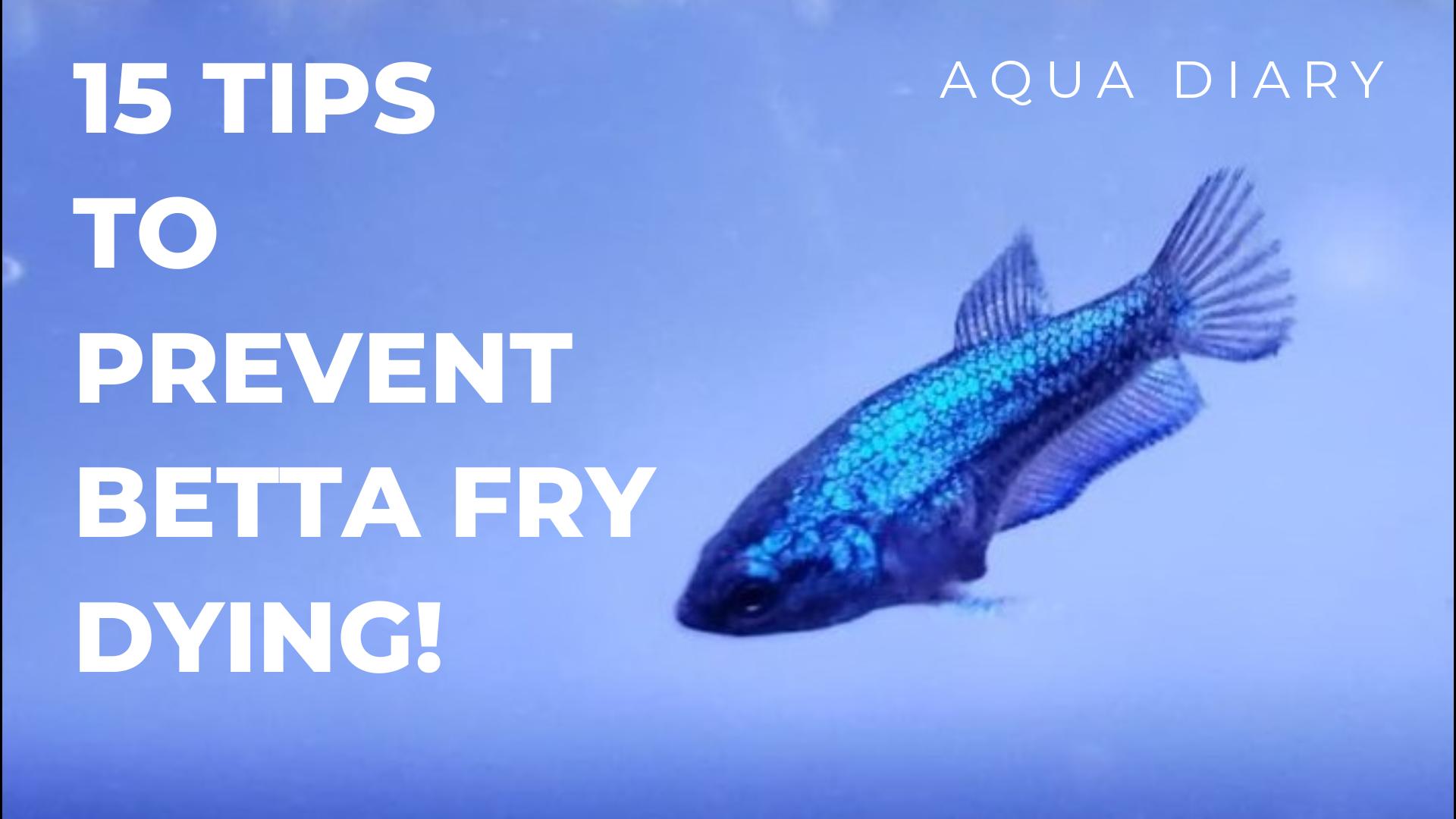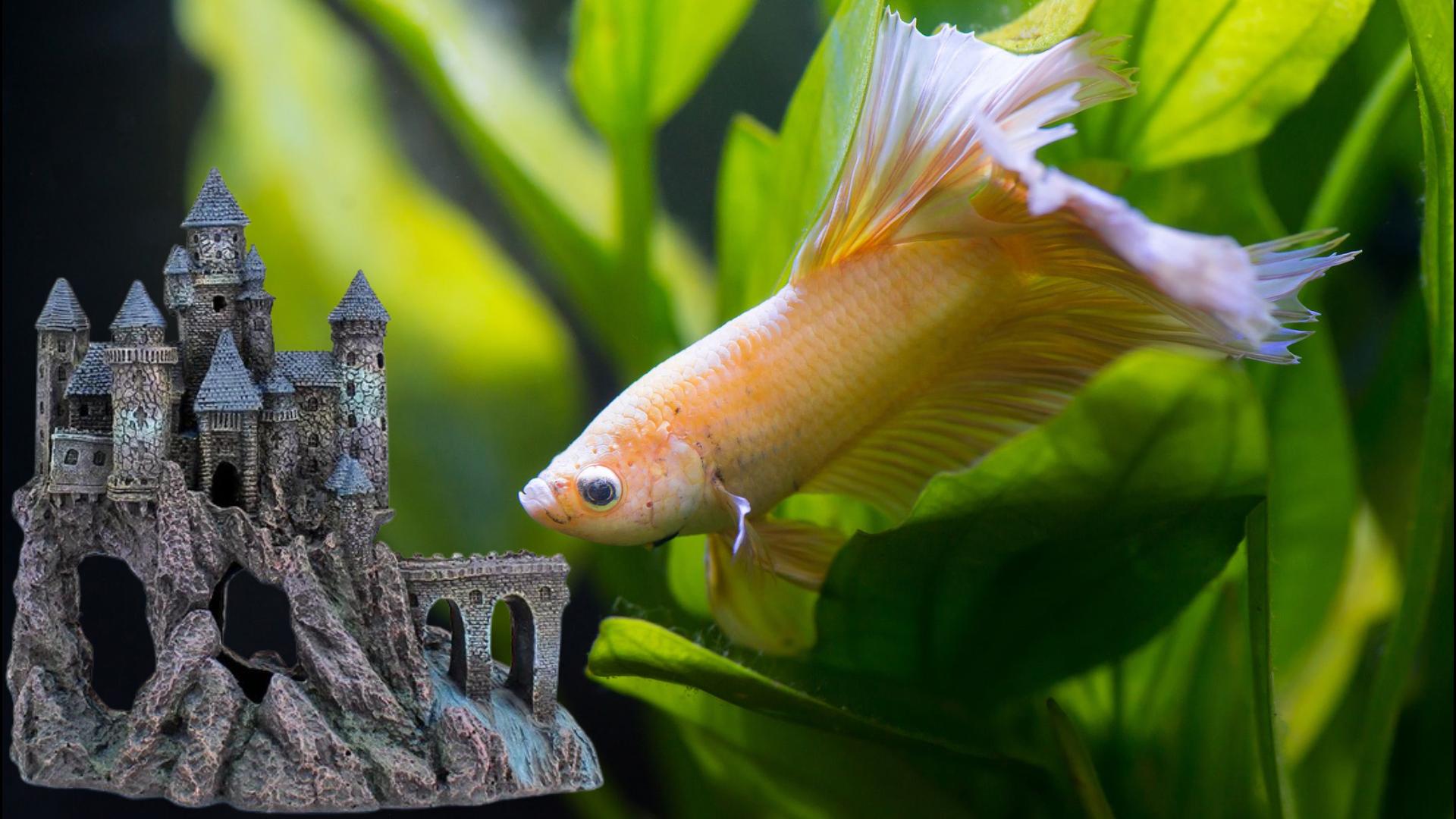Breeding betta fish is an exciting endeavor, but the real challenge lies in successfully raising the fry. These delicate creatures demand a meticulously controlled environment and a specialized diet at each growth stage. Initially, their diet consists of minuscule fare, evolving as they grow. With fry numbers ranging from 50 to over 300, food provisions must be abundant. Pristine water quality and live food are essential for newly hatched fry. As young males develop territorial behavior, readiness to transfer them to new containers is crucial. In this discussion, we’ll delve deeper into these vital aspects of betta fry rearing.
How does Betta fish breeding work?
Betta fish build bubble nests to get them prepared for breeding. The male then tries to entice a pregnant female to come and visit. Once she arrives, the male wraps around the female, triggering her to release eggs and the male to release milt around eggs. Male bettas watch over the eggs for days before they hatch. And even after they hatch, the father defends them aggressively until they are ready to leave the nest. If they become stressed or if there are any other distractions, they will either fail to spawn or eat the eggs which results in betta breeding failure. If you are new to betta breeding, check out the betta breeding blog on the channel. This blog covers only the scenarios in which betta fish eat their eggs and fry and how to prevent it. If you like to know about the betta fish breeding with end to end information, checkout our post on betta fish breeding for beginners to understand start to end.
Betta fry grow-out tank setup
There are different methods for raising Betta fry. Some breeders will transfer them immediately into a new tank that is designed specifically for raising them. Other breeders will keep them in the breeding tank for about the first 3-4 weeks before moving them into a grow-out tank. No matter what method you use, there are some basics that are needed for all betta fry grow-out tanks.

The ideal grow-out tank is 20 gallons or more. Keep the temperature in the mid to high-80s with a heater.
The tank needs a filter to help oxygenate the water and help keep the water clean.
Tank lighting is needed to grow fry, but it can be either standard aquarium lighting or natural daylight.
A tank cover for the aquarium is a good idea to keep the fry from inadvertently jumping out, as well as anything from falling into the tank.
When doing water changes, regular gravel siphons will pull too much water quickly. So, siphoning with either a turkey baster or flexible tubing like an airline hose works best.
Live plants are not absolutely necessary but they are beneficial. They provide infusoria, which is a natural food source for very young fry, and they are also thought to help promote growth in the fry.
Best Betta fry foods – Raising Betta Fry
Betta fry has the instinct to feed on anything that moves and is smaller than them. However, they won’t eat anything dry like flakes or even powders, so they will need live foods. Infusoria and tiny free-swimming nematodes such as VinegarEels, Microworms, Banana Worms, and Walter Worms, as well as baby Brine Shrimp, Daphnia, Fairy Shrimp, and Grindal Worms, are all great for fry. Alive food cultures are not always readily available in fish stores, but can often be specially ordered or purchased online. It’s crucial to obtain cultures before starting the breeding process.
Once your Betta Splendens spawn, you’ll want to start growing cultures to have them available as the betta fry becomes free swimming. Most cultures like dark areas and they can be smelly, so you may want to store them safely.
Feeding a Betta fry
Newly hatched fry initially cluster near the tank’s top, feeding from their egg sacs; they don’t require immediate feeding. Once most are free-swimming (typically within days), they’re ready for their first feeding. Some become free-swimming quickly, while others stay in a clump, where live plants with infusoria can assist.
It’s best to provide several small daily feedings, preventing food waste and water contamination. Feeding them 3 to 4 small meals daily is optimal.
For the initial three days, offer minuscule foods like infusoria and tiny nematodes (e.g., Vinegar Eels, Microworms, Banana Worms, and Walter Worms).
After three days, they’re ready for baby brine shrimp.
From one week onwards, continue with baby brine shrimp and introduce finely grated frozen foods like bloodworms and Daphnia.
Around 4-5 weeks, start offering brine shrimp and live blackworms, along with options like Grindal Worms. These foods can also be fed to adult betta fish.
At about 8-9 weeks, as the fry matures, continue with live brine shrimp and bloodworms, adding frozen foods. You can also introduce dry foods at this point.
As they grow and transition to dry food, reduce feedings; once or twice a day is sufficient when they are fully grown.
Betta fry tank maintenance – Raising Betta Fry
Betta fries are very susceptible to unstable tank conditions, which include the quality of the water and the temperature. The right water quality is critical for a successful spawn, but also for the health of the fry and to boost rapid growth. A primary part of daily maintenance activity is monitoring the water temperature and changing the water. The ideal pH is between 7-7.2 but if you have a bit lower or higher, it’s okay to just leave it alone.

Maintaining an optimal water temperature is vital for the fry’s survival, ideally at 85-88 degrees. Keep the aquarium heater stable through regular checks, as betta fry are sensitive to temperature fluctuations.
To ensure water quality, begin with the first water change at two weeks old, then continue regular changes. Some breeders recommend 25% changes twice a week, while daily small changes suffice. In nature, larger fry release Growth Inhibiting Hormones, potentially stunting others’ growth. Frequent water changes help mitigate this.
For gentle water management, use a turkey baster or flexible tubing instead of strong gravel siphons that may harm tiny fry. To control water flow, consider adding a slender stick, like a chopstick, to the tubing’s end.
Separate the fry
At about 8-9 weeks of age, the fry will begin to show its colors. An occasional batch may start coloring as early as 4 weeks of age, but this is unusual. Males will start to assert their nippy behavior at this stage. When this happens they must be separated into their tanks or containers, a process known as “jarring.”
Jarring Betta Fry
Each male will need his own home which can be a jar, bottle, cup, or another container. Females can also be moved into jars, but if there’s not enough space for that they can be kept together in a tank. However, there is a risk that larger fish will eat their smaller siblings.

Maintaining the jars
Maintaining jars can be a big job, depending on how many containers you have. Place the jars in a large tub of water and keep a single heater in the tub to maintain the temperature. Water changes will still be needed for each jar.
Once your fry is grown out and has obtained its color, it will be ready to trade or sell. You may be able to find homes for them through friends or a local pet store that is willing to take them or trade for them. Show-quality Betta fish can be shared with other breeders and even sold to Betta lovers online. The entire process of breeding Betta splendens is fun and ultimately very rewarding!
I hope you find this topic helpful in growing your betta fish fry. If you would like to know more about betta fish breeding and care, click the next article in this series.
Do betta fish eat their eggs and fry?
Often, betta fish breeding fails because betta parents eat their fry or eggs. In this blog, we are about to talk about different scenarios when betta fish eat their babies and how to prevent them. Let’s get started.
Do Male Bettas Eat Their Fry? – Betta fish eat their eggs!
Indeed, male betta fish can consume their own fry, a behavior observed in various fish species, including Betta fish. Males exhibit a protective instinct during breeding, creating bubble nests and defending them vigorously. They collect eggs and return fallen fry to the nest. New breeders may misunderstand this as aggression, but it’s integral to successful breeding.
Male bettas also eat unfertilized eggs to maintain water quality. Distinguishing between natural behavior and true consumption is crucial.
As fry starts swimming, males might see them as threats or competition. To prevent this, separate the male a few days after hatching, providing suitable conditions and regular feeding. Betta fish excel in parental care compared to many other species.
This ensures fry survival and minimizes risk, enhancing successful breeding.
What is the importance of betta bubble nests in breeding?
Betta bubble nests play a crucial role in the breeding process. Male bettas are responsible for building the bubble nest, which is made up of bubbles created by the male blowing air from his mouth. The bubbles then float to the surface of the water and form a nest-like structure. Once the nest is built, the male will lure the female under the nest to begin the breeding process. After the eggs are laid and fertilized, the male will pick them up and place them in the nest, where they will remain until they hatch. The male will continue to tend to the nest and fry, protecting them from threats and ensuring that the water in the nest stays clean and oxygenated. Bubble nests provide enough oxygen for betta fry and protect them from other environmental factors. They provide a safe and stable environment for fertilized eggs and fry.
Do Female Bettas Eat Their Eggs? – Betta fish eat their eggs!
The story is entirely different when it comes to female betta fish eating their eggs. A female betta fish may also eat released eggs during the spawning process, and this is more common than males eating eggs. You should remove the female from the tank as soon as all eggs are laid. You should place her in a separate tank so that she does not consume eggs or fry.
Why do your Betta eggs sit at the bottom of the tank?
Eggs on the tank bottom can result from various situations. Firstly, in the absence of males, females tend to skip bubble nests and deposit their eggs at the tank’s base. Regardless of the female’s effort in nest-building, without the male’s contribution, the eggs remain unfertilized. Secondly, strong currents or tank movements might dislodge eggs from bubbles. Typically, males recover and return these eggs to the nest, so no need for alarm. Lastly, if the male is stressed or fails to create a suitable bubble nest for egg protection, they might settle at the tank bottom. Understanding these factors is vital for addressing or preventing such issues in your breeding tank.
Is it true that Big Brothers eat the smaller fry? – Betta fish eat their eggs!
Baby bettas grow at different rates, and the larger ones have a tendency to dominate and sometimes eat smaller ones due to the aggressive nature of Betta splendens. The bigger fry will also eat more food than the smaller fry, resulting in the larger ones growing faster. Meanwhile, the smaller ones struggle to get enough food, impacting their growth negatively. After a few weeks, experienced breeders will separate all baby bettas by size to ensure their safety. This prevents larger ones from harming smaller ones, allowing each betta to grow at their own pace.
Why do some betta fish eat their babies?
Betta fish may consume their offspring in various situations, whether in the egg or fry stage. Male bettas can struggle with parenting if they’ve only lived in small tanks or are first-time fathers due to their natural aggression. Creating a secure breeding environment and maintaining the aquarium properly is vital for their well-being and preventing behaviors like consuming their fry.
Female bettas may eat their own eggs if left too long. To avoid this, promptly remove the female once all eggs are laid. Sometimes, the male may attack the female, signaling the need for separation, ensuring egg safety and successful hatching.
Mouthbreeder bettas hold eggs in their mouths until hatching, but accidental fry consumption can occur. Stress or poor fry development, due to factors like water quality or genetics, can contribute to this. Males may also eat fry if overwhelmed. Close monitoring and care minimize cannibalism risk, allowing mouthbreeder bettas to raise healthy fry.
Are community tanks suitable for betta fish breeding? – Betta fish eat their eggs!
If you’re wondering whether bettas can successfully breed in a tank with other fish, unfortunately, the answer is no. The male betta is usually responsible for caring for the eggs and fry, but can become overwhelmed and stressed if he cannot protect them from other fish in the community tank. In such cases, he may end up eating the eggs or fry rather than risk them being killed by other fish.
To ensure the best breeding conditions for bettas, it’s recommended to use a shallow, low-flow tank with proper water conditions. Bettas don’t like strong light or water flow, and they prefer to be alone, so a five or ten-gallon tank with no other fish is ideal. Additionally, keeping the water level to only four to six inches can also help minimize stress and increase the chances of successful breeding.
Do betta eat guppy fish fry?
If you’re keeping bettas in a community tank with other fish, such as guppies, it’s possible that the bettas may eat the guppy fry when the female guppy delivers them. It’s worth noting that if your betta has a history of eating guppy fry, I would not recommend using it for betta breeding, as there is a chance it may also eat the betta fry once it hatches.
Similarly, if you’re breeding bettas and keeping the fry in the same tank as the male betta for a long time, there is a risk that the adults may eat the fry. To avoid this, it’s best to separate the fry from the adult bettas and keep them in a separate tank. By doing so, you can help ensure that the fry has the best possible chance of survival and growth without being threatened by the adults.
Have we missed any other scenarios where adults can eat betta fry? What issues have you faced during the breeding process? Please let us know what you think in the comments section below. See you on the next topic.





